The bustling capital of Sicily, Palermo delights visitors with a fusion of Arab, Norman, and Baroque architecture and culture. Though grittier than some Italian hotspots, this chaotic port city also captivates with vibrant street life, vibrant markets, and delicious food.
| No. | Activity | Description |
|---|---|---|
| 1 | Monreale Cathedral | Marvel at Norman architecture and Byzantine mosaics. |
| 2 | Palermo Cathedral | Explore its mixed architectural styles and history. |
| 3 | Vibrant Street Markets | Experience local culture in bustling markets. |
| 4 | Palazzo dei Normanni | Tour the former royal palace with impressive art. |
| 5 | Orto Botanico di Palermo | Wander in a tranquil botanical garden. |
| 6 | Teatro dei Pupi | Enjoy traditional Sicilian puppet theater. |
| 7 | Street Food | Indulge in local street food specialties. |
| 8 | Catacombe dei Cappuccini | Visit eerie underground catacombs. |
| 9 | Sicilian Puppet Traditions | Explore the ancient art of puppetry. |
| 10 | Sicilian Wine and Gastronomy | Sample local cuisine and wines. |
| 11 | La Martorana Church | Admire its blend of diverse architectural styles. |
| 12 | Capuchin Catacombs | Tour macabre mummified remains. |
| 13 | Monte Pellegrino | Hike for panoramic city views. |
| 14 | Historic Quarters | Wander through old neighborhoods. |
| 15 | Day Trip to Cefalù | Visit a scenic fishing village. |
In 2024, make sure to include these 15 top attractions and activities when exploring Palermo and discovering the city’s unique character:
Marvel at Monreale Cathedral
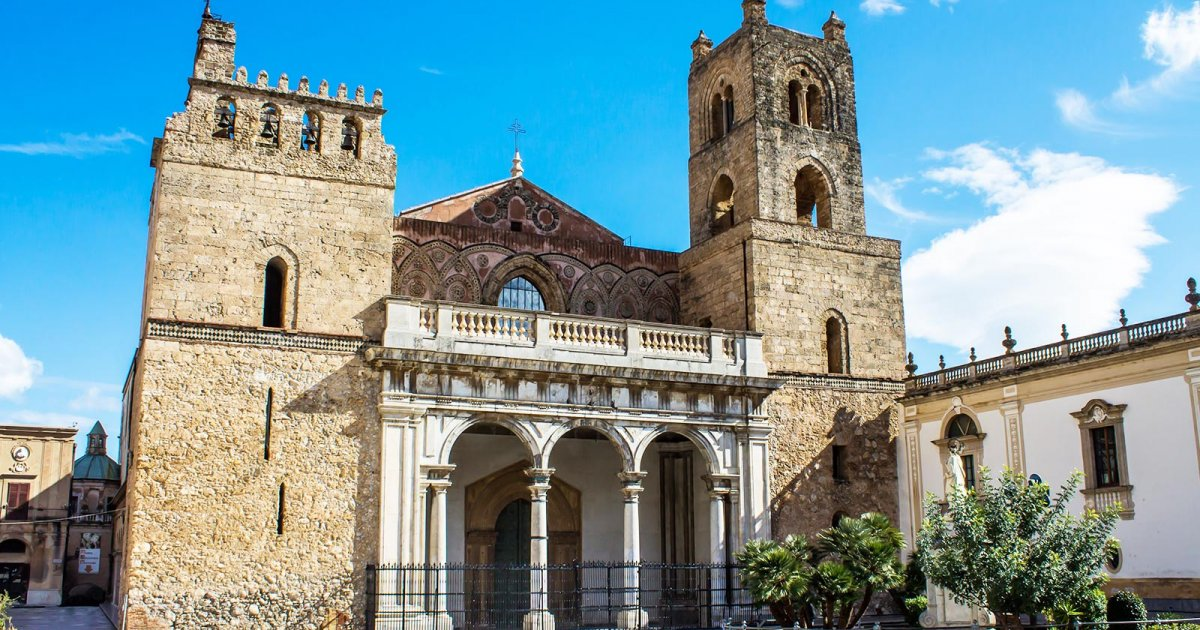
Name and Location: Monreale Cathedral, Monreale, near Palermo
History and Significance: This 12th-century Norman cathedral is renowned for its spectacular Byzantine mosaics covering over 6,000 sq meters of interior walls and ceilings.
What to Expect: Viewing the magnificent golden mosaics depicting biblical scenes and saints. Seeing the cathedral’s cloisters, fountain, and valley views.
Visitor Information: 8 miles from Palermo. Reach by taxi or bus. Open daily. Modest dress required. Admission fee includes cathedral, cloisters and tower.
The 12th-century cathedral at Monreale is one of the world’s greatest examples of Norman architecture, boasting outstanding Byzantine mosaics covering nearly every inch of interior surface. This UNESCO World Heritage site above Palermo dazzles with its golden mosaics depicting biblical scenes across the walls and ceilings.
Seeing this cathedral is like stepping into an enormous, shimmering jewel box. Don’t miss the peaceful cloister garden with elegant twin columns. Visiting Monreale, with its hilltop views, makes an easy and rewarding day trip that should top your list.
Soak in the History of Palermo Cathedral
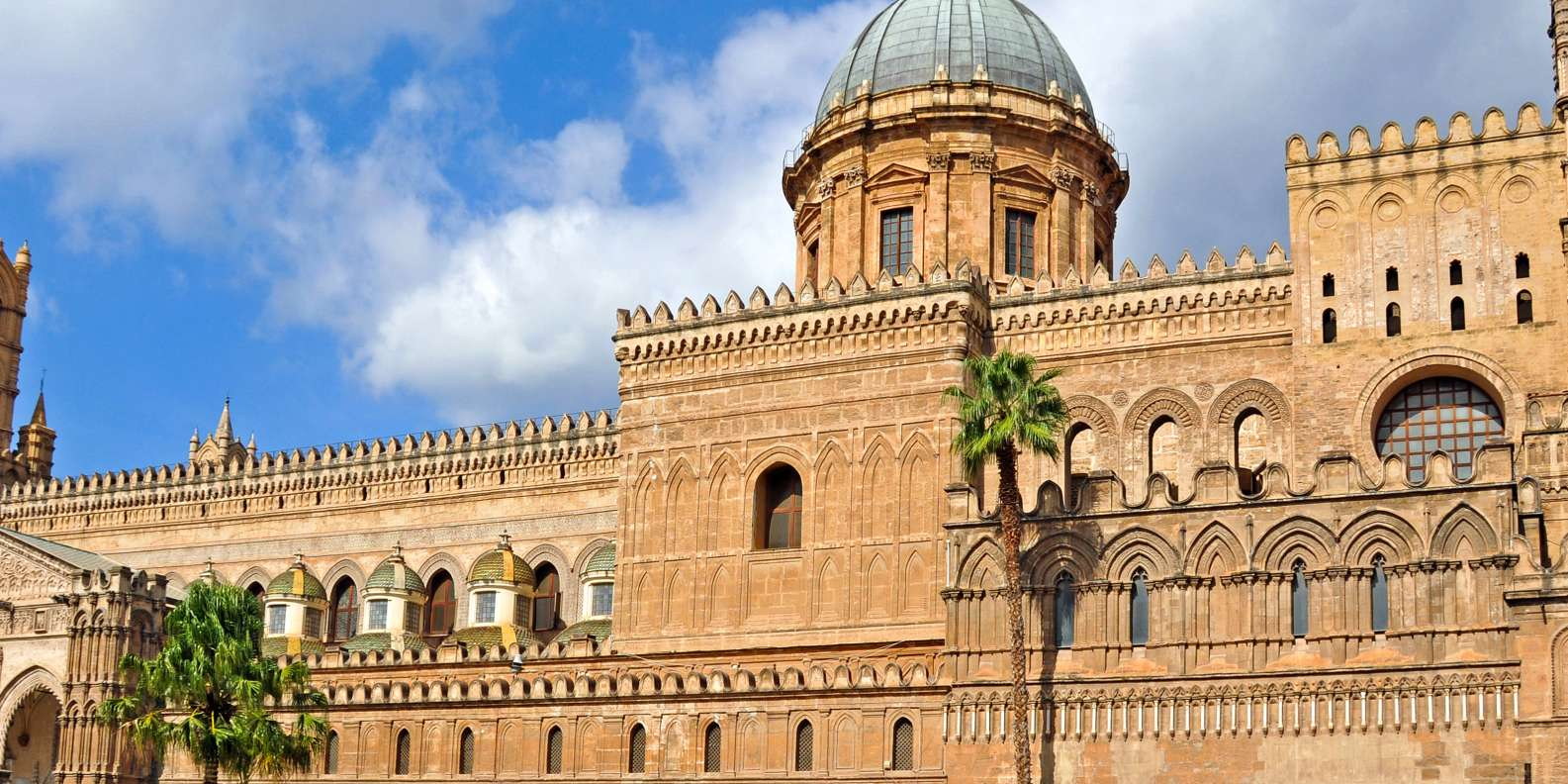
Name and Location: Palermo Cathedral, Corso Vittorio Emanuele, Palermo
History and Significance: Palermo’s cathedral combines Arab, Norman, Gothic and Baroque elements. Site of coronations of Sicily’s kings and queens for centuries.
What to Expect: Admiring the mix of architectural styles and royal tombs. Seeing treasures like the imperial crown of Constance of Aragon.
Visitor Information: In central Palermo. Open daily. Modest dress required. Free admission to cathedral, small fee for crypt and treasury.
At the heart of the city, the 12th-century Cathedral of Palermo showcases a mix of architectural styles from its long history under Arab, Norman, and Spanish rule. The exterior marries Norman porticos with Islamic domes and arches. Inside, gaze up at more stunning mosaic scenes from the life of Christ glittering across Byzantine domes.
Below the cathedral, see the royal Norman tombs and treasury in the crypt and creep down into ancient catacombs. Climb the bell tower for panoramic city views. This cathedral epitomizes Palermo’s unique cultural fusion.
Wander Through Vibrant Street Markets
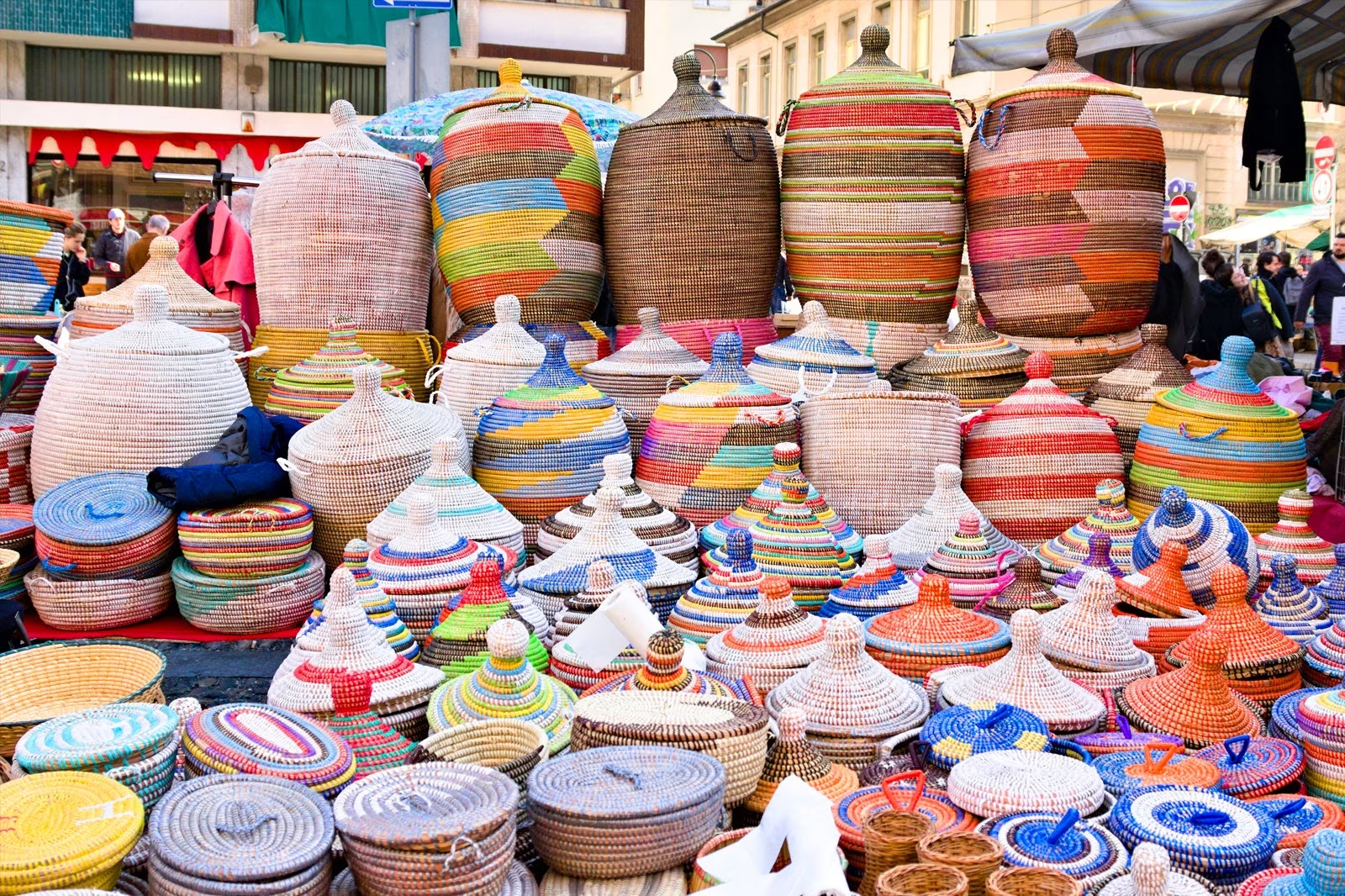
Name and Location: Street markets, Palermo, Sicily
History and Significance: Vibrant open-air markets like Ballarò, Capo, and Vucciria have animated Palermo’s streets for centuries, offering fresh produce, seafood, goods.
What to Expect: Exploring lively stalls overflowing with colorful fruits and vegetables, vendors shouting deals. Sampling fresh and dried nuts, olives, cheese.
Visitor Information: Markets open mornings Monday through Saturday. Most are near Palermo’s historic center. Wear comfortable shoes, watch for pickpockets.
Palermo’s bustling street markets are the lifeblood of the city and the perfect place to soak up local culture. Weave through the cacophony of sights, sounds, and smells at Ballarò Market as vendors hawk wares from spices to sheep heads to fresh produce. Don’t miss the Capo Market lining Via Sant’Agostino for fish, meat, cheese, and street food.
The sprawling Vucciria Market and Antica Fiera del Mediterraneo also offer photogenic scenes of Sicilian street life. Bring your haggling skills and appetite!
Tour the Palazzo dei Normanni

Name and Location: Palazzo dei Normanni, Piazza Indipendenza, Palermo
History and Significance: As seat of successive rulers from the 9th to 19th centuries, this palace bears history-rich rooms and the exquisite Cappella Palatina chapel.
What to Expect: Admiring Arab-Norman architecture and frescoed halls on guided tours. Seeing the mosaic-covered chapel, one of Palermo’s crowning monuments.
Visitor Information: Next to Palermo Cathedral. Open Mon-Sat. Admission ticket includes Norman Palace, Royal Apartments, Gallery of Palatine Tapestries.
As the seat of Norman kings in the 12th century, the Palazzo dei Normanni contains Palermo’s finest examples of royal Norman architecture and art. The staggering Palatine Chapel dazzles with glittering Byzantine mosaics on every surface, even the wooden ceilings. See the Room of Roger for its jewel-box interiors and mosaic images of life at court.
Don’t miss hunting scenes painted on the walls of the royal apartments. Wandering this palace provides an immersion in Sicily’s unique Arab-Norman-Byzantine past.
Stroll Through Orto Botanico di Palermo

Name and Location: Orto Botanico di Palermo, Via Lincoln, Palermo
History and Significance: Palermo’s scenic 10-acre botanical garden dates to the late 18th century and contains over 12,000 species of exotic plants from around the world.
What to Expect: Strolling through palm tree avenues and sections like the citrus orchard, aquatic plants, medicinal herbs. Peaceful green oasis.
Visitor Information: South of Palermo’s historic center. Open daily. Small admission fee. Cafe and gift shop onsite. Ideal for a relaxing stroll.
For a peaceful botanical oasis in the city, wander through Palermo’s 10-acre Orto Botanico. Founded in 1789, these gardens contain a lovely mix of tropical and Mediterranean plants, winding pathways through scenic spots like a redwood grove and lily pond, and thousands of exotic species in greenhouse settings.
Climb the hill for excellent views over the garden and city below. It’s a tranquil place to learn about biodiversity and soak up sunshine and fresh air after exploring Palermo’s hustle and bustle. The shady gardens offer the perfect retreat on a hot day.
See Puppetry Art at Teatro dei Pupi
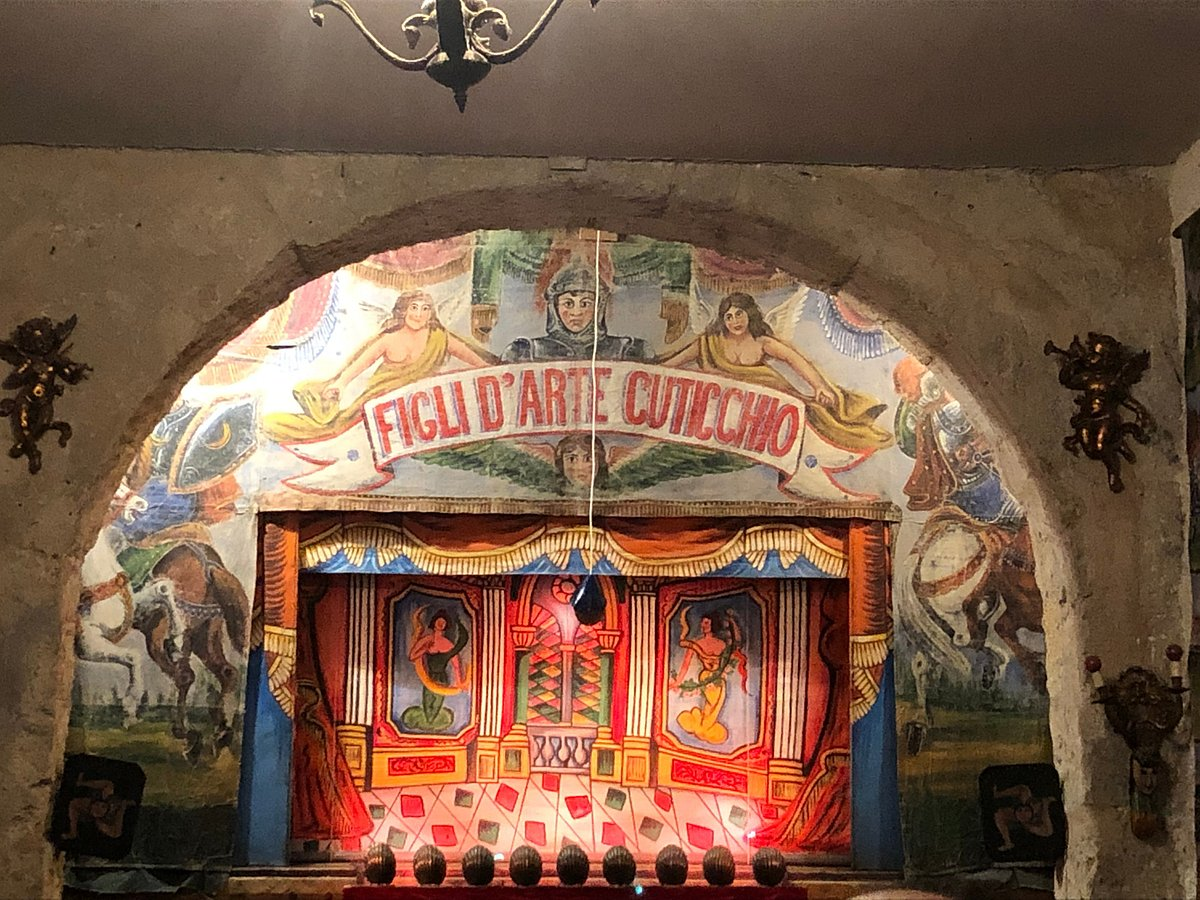
Name and Location: Puppet theaters, Palermo, Sicily
History and Significance: Sicily’s Opera dei Pupi tradition dates back centuries, reenacting knightly tales with intricately hand-crafted marionettes. Popular family entertainment.
What to Expect: Watching a dramatic performance by puppet masters. Seeing the ornate puppets and sets up close. Learning about this unique Sicilian folk art.
Visitor Information: Year-round shows at theaters like Teatro dei Pupi and Teatro Carlo Magno. Make reservations and arrive early. Modest fees apply.
Sicilian puppet theater has an ancient pedigree, and visiting a Teatro dei Pupi is a one-of-a-kind Palermo experience. At puppet workshops and small theaters around the city, you can watch an entertaining show with hand-carved marionette puppets acted out by puppet masters.
The shows bring Sicily’s myths and medieval tales to life through this traditional folk art. Museo Antonio Pasqualino has an extensive collection of Sicilian marionettes dating back hundreds of years, letting you admire the intricate craftsmanship up-close.
Indulge in Street Food
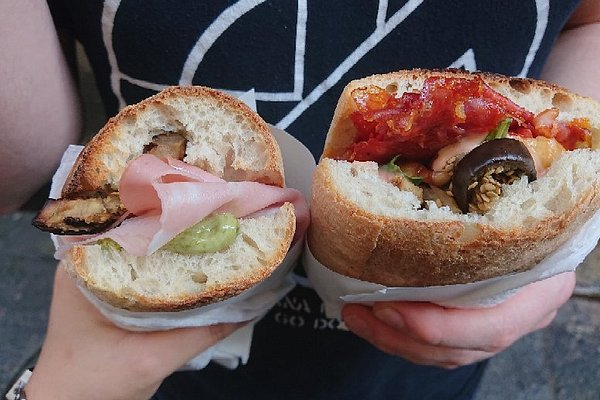
Name and Location: Street food, Palermo, Sicily
History and Significance: Palermo is renowned for delicious street food like arancini rice balls, chickpea fritters and spleen sandwiches sold from tiny establishments and food carts.
What to Expect: Sampling inexpensive local bites like fried seafood and meats, cheeses, olives. Finding authentic holes-in-the wall off the tourist path.
Visitor Information: Sold throughout Palermo but concentrated in old neighborhoods like Vucciria. Look for long lines and busy spots.
For an authentic taste of local cusine, nothing beats Palermo’s incredible street food. Grab snacks from street vendors and hole-in-the-wall joints around the city. Classic Palermo street eats include pani ca meusa (spleen sandwich), stigghiola (grilled goat skewers), sfincione (thick Sicilian pizza), and marinated seafood like octopus or cod.
Don’t miss arancini (fried rice balls), cannoli filled with sweet ricotta, and frutta di martorana (almond marzipan sweets shaped like fruits). Palermo knows how to satisfy any appetite!
Tour the Catacombe dei Cappuccini
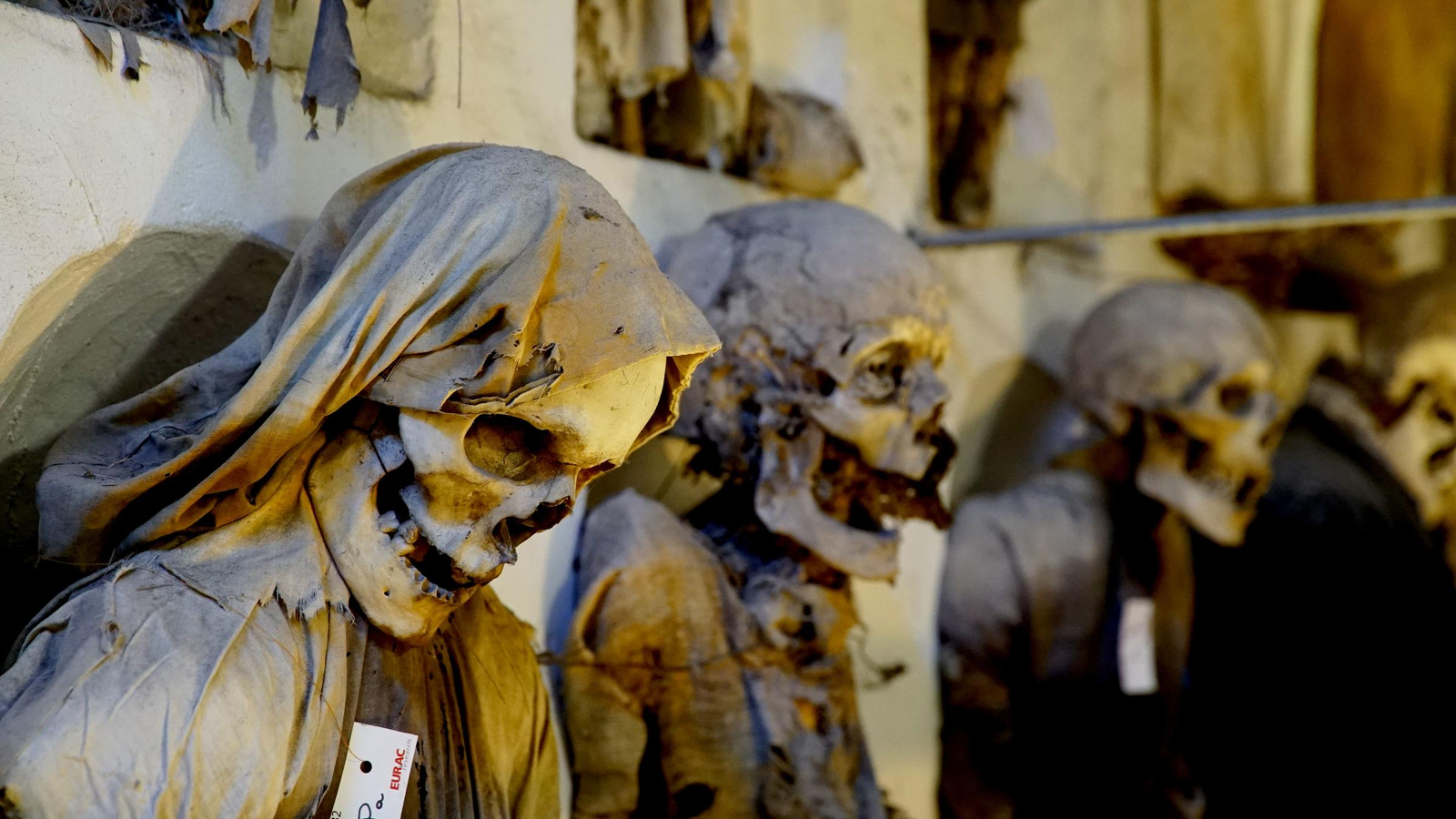
Name and Location: Catacombe dei Cappuccini, Piazza Cappuccini, Palermo
History and Significance: These extensive 16th century catacombs contain thousands of corpses, including mummified friars, monks, and townspeople hanging in eerie corridors.
What to Expect: Descending into the dark catacombs to view the preserved bodies. An offbeat, macabre sight. Not suitable for some visitors.
Visitor Information: Located in western Palermo. Open daily. Admission fee. Photography prohibited. Dress respectfully. Not ideal for young children.
Beneath Palermo’s Capuchin monastery lies one of the city’s eeriest sights—the Catacombe dei Cappuccini. These catacombs hold the mummified remains of monks, city nobles, and other locals who died between the 17th and 19th centuries.
Over 8,000 preserved corpses line the walls and halls in rooms and corridors open for visitors. It’s a dark, creepy place that offers an unusual glimpse into Palermo’s past. This attraction certainly isn’t for the faint of heart!
See Sicilian Puppet Traditions
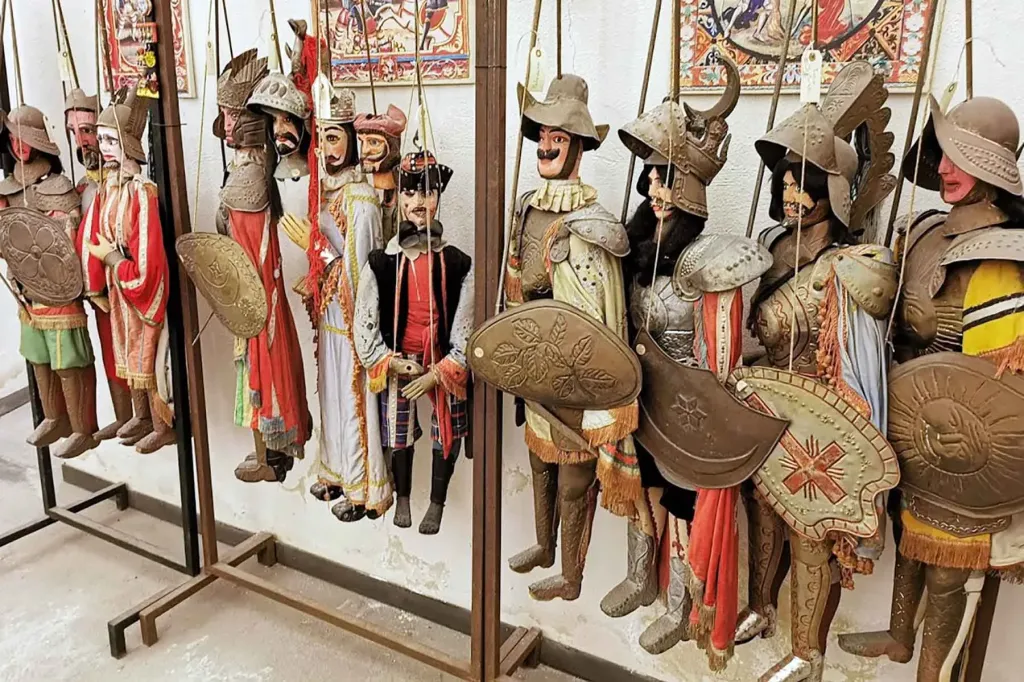
Name and Location: Puppet workshops and museums, Palermo, Sicily
History and Significance: Sicily’s traditional Pupi puppetry arts are preserved through dedicated museums and workshops providing a behind-the-scenes look into puppet construction.
What to Expect: Observing artisans carving wood and assembling puppets. Learning about character design, costumes, theater sets. Smaller collections to tour.
Visitor Information: Locations include Museo Internazionale delle Marionette and Laboratorio di Pupi Fratelli Napoli. Modest fees. Call ahead.
The Opera dei Pupi, or Sicilian puppet theater, has an ancient history on the island as a way to preserve legends, myths, and medieval tales through puppetry. Palermo has several workshops and theaters that carry on this folk art tradition through entertaining performances with hand-carved marionettes.
The stringed puppets are manipulated by a puppet master called a puppeteer. Museo Antonio Pasqualino has an impressive collection of antique Sicilian puppets that let you see the incredible workmanship up close. Watching a performance brings this unique art form to life!
Sample Sicilian Wine and Gastronomy

Name and Location: Sicilian cuisine in Palermo
History and Significance: Palermo cuisine reflects its cultural fusion, with staples like fresh seafood, pasta, stuffed meats and dishes incorporating exotic spices.
What to Expect: Savoring specialties like pasta con le sarde, caponata eggplant, cassata cake. Sampling inventive modern takes and street food.
Visitor Information: Abundant dining choices downtown. Look for smaller family establishments off the beaten path. Reservations recommended.
Sicilian food shines with Arabic and North African influences combined with fresh seafood and Mediterranean flavors. Palermo is a paradise for food-loving travelers eager to try authentic specialties. Dine on seafood like swordfish and sardines, snack at street food stalls, and sample Sicilian desserts like cannoli and cassata.
Pair your meals with excellent local wines like Nero d’Avola and explore food markets for cheeses, olives, capers, and other staples of the cuisine. A taste of Sicilian wine and food is the ultimate souvenir.
Admire La Martorana Church

Name and Location: La Martorana Church, Piazza Bellini, Palermo
History and Significance: This 12th century church exhibits Arab-Norman architectural style and detailed Byzantine mosaics. Long an important center of Palermo religious life.
What to Expect: Admiring the church’s mosaic-covered dome, columns and biblical scenes. Seeing blended Arabic, Romanesque and Norman elements.
Visitor Information: In central Palermo near the cathedral. Open daily. Modest dress required. Free admission but donations welcome.
Blend of Arab, Byzantine, and Norman elements, the 12th century La Martorana church is a small architectural gem. Its medieval mosaics, including one of famous King Roger II being crowned by Christ, are considered some of Palermo’s finest. The Baroque interior and frescoed cupola came later.
Calming cloisters next to the church are decorated with exotic vegetation, citrus trees, and columns. For a lesson in how diverse cultures comingled under Norman rule in Palermo, a visit here is a must. Don’t miss the bell tower views!
Tour the Capuchin Catacombs

Name and Location: Capuchin Catacombs, Via Cappuccini, Palermo
History and Significance: These extensive underground tombs contain thousands of corpses and mummies, including monks and prominent locals displayed in creepy poses. An offbeat attraction.
What to Expect: Descending into dark corridors lined with deceased bodies hanging on walls or posed in settings. Not for the faint of heart but intriguing.
Visitor Information: Located in western Palermo. Open daily. Admission fee. Photography prohibited. Dress respectfully. Not ideal for young children.
Underneath the 16th century Capuchin monastery lies one of Palermo’s strangest and eeriest sights—the Capuchin Catacombs. In this macabre series of rooms and corridors, nearly 8,000 corpses of monks, nobility, professionals, and others mummified between the 17th and 19th centuries cover the walls, hung in rows or in coffins.
Some are well-preserved while others are faded and skeletal. It provides an uncommon glimpse into death and burial traditions in Palermo’s past. Visitors with nerves of steel will appreciate this dark and bizarre slice of history.
Hike the Trails of Riserva Naturale Orientata Monte Pellegrino
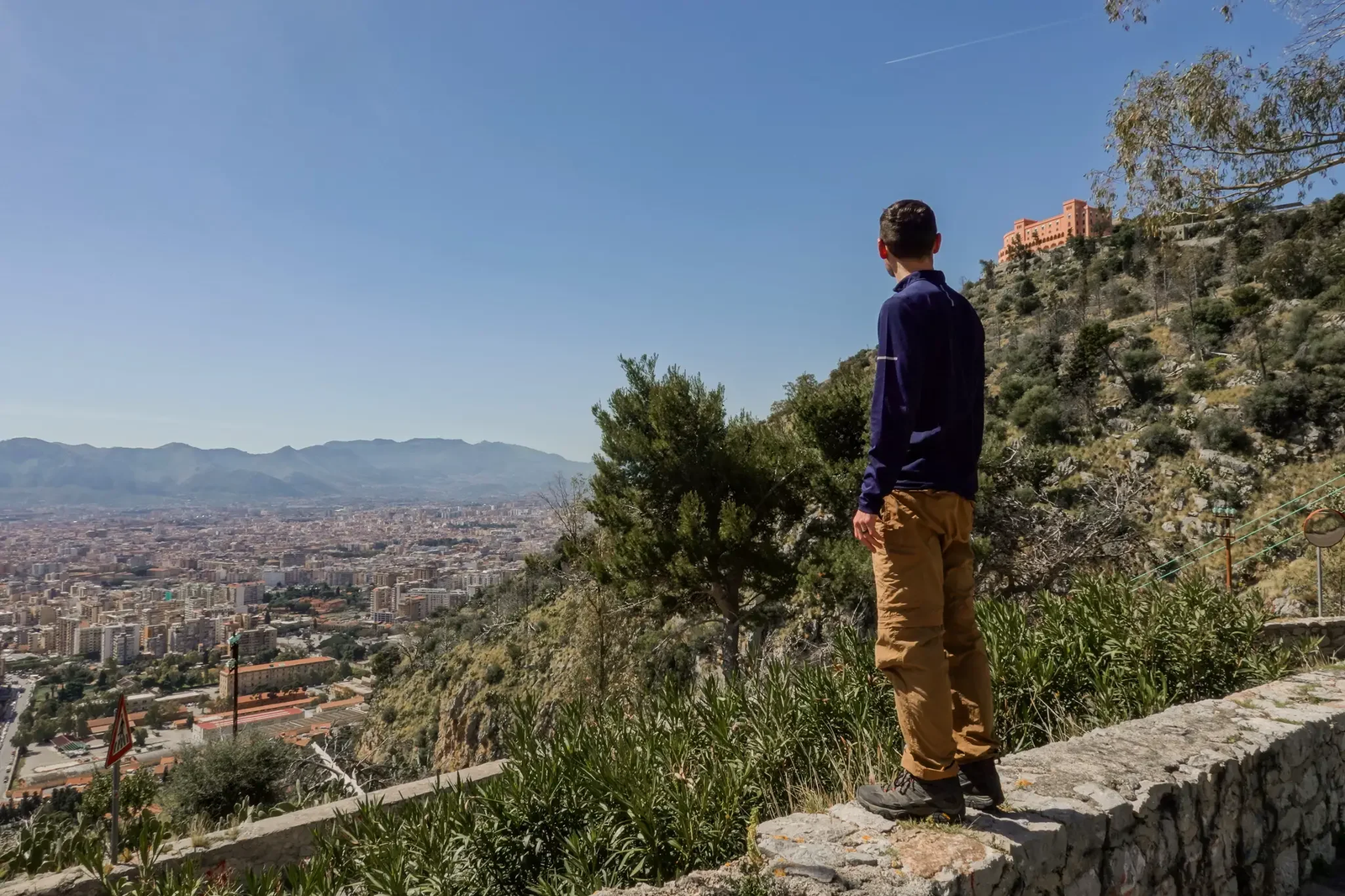
Name and Location: Riserva Naturale Orientata Monte Pellegrino, Palermo, Sicily
History and Significance: This rugged coastal reserve just outside Palermo offers beautiful vistas and hiking amidst cliffs, caves, and diverse vegetation.
What to Expect: Hiking the reserve’s winding trails taking in panoramic views over Palermo. Cooling off at the beach below. Seeing local flora and fauna.
Visitor Information: Reach by taxi or bus from Palermo. Sturdy shoes required for hiking. Carry plenty of water and snacks. Guided tours available.
Just north of Palermo, the rugged cliffs of Monte Pellegrino offer beautiful hiking with panoramic views over the city below. Lace up your boots to follow scenic trails through this protected nature reserve, home to a variety of Mediterranean shrubs and wildlife.
Look for birds including the rare Bonelli’s eagle. Paths wind past cliffs, mountain streams, and rocky outcrops with dazzling vistas across the bay to Palermo. After working up an appetite on the trails, dine at a trattoria back in town.
Wander Through Historic Quarters

Name and Location: Historic quarters, Palermo, Sicily
History and Significance: Palermo’s historic neighborhoods like Kalsa, Vucciria, Capo and Albergheria are full of faded baroque palaces, vibrant markets, and charming hole-in-the-wall spots.
What to Expect: Wandering the atmospheric streets to uncover old churches, hidden architectural gems, and local restaurants. Immersing in authentic Sicilian life.
Visitor Information: Best explored on foot. Avoid poorly lit or deserted areas at night. Guided walking tours available to maximize insights.
Each of Palermo’s historic quarters like La Kalsa, Vucciria, and Il Capo has charm perfect for wandering. Weaving through the narrow lanes, you’ll find baroque churches, remnants of Arab architecture and street layouts, vibrant markets, and balconied buildings draped in laundry.
Soak up the atmosphere in these storied neighborhoods. Sites like Piazza Marina with its medieval towers and Piazza Bellini lined with outdoor cafés make great spots to stop and people-watch during your explorations. Don’t forget to look up for architectural details.
Day Trip to Cefalù

Name and Location: Day trip to Cefalù, Sicily
History and Significance: This picturesque historic seaside town makes an easy and rewarding day trip from Palermo to see medieval architecture and breathtaking landscapes.
What to Expect: Exploring the Norman cathedral, winding medieval streets, sandy beach, and hiking trails with coastal vistas. More relaxed small town vibes.
Visitor Information: About 1 hour east of Palermo by car or train. Visit on a weekday to avoid crowds. Check train schedules for return timing.
For a lovely day escape, make your way along the coast to the scenic fishing village of Cefalù about an hour east of Palermo. This medieval town is centered around its Norman cathedral and charming old town full of winding cobblestone lanes perfect for strolling.
Explore the cathedral to see more exquisite Byzantine mosaics and climb the steps to La Rocca, a dramatic headland overlooking the sea. Sunbathe beside Cefalù’s crescent beach or walk along the scenic medieval defensive walls. The laidback seaside vibe here makes a relaxing contrast to the big city.
Conclusion
With its blend of Arab, Norman, and Mediterranean influences, Palermo dazzles visitors with stunning architecture, vibrant street life, and mouthwatering cuisine. In 2024, allow time to uncover the city’s unique history and culture, from towering cathedrals to bustling markets. Wandering Palermo’s atmospheric streets, you might just discover your own personal Sicily.

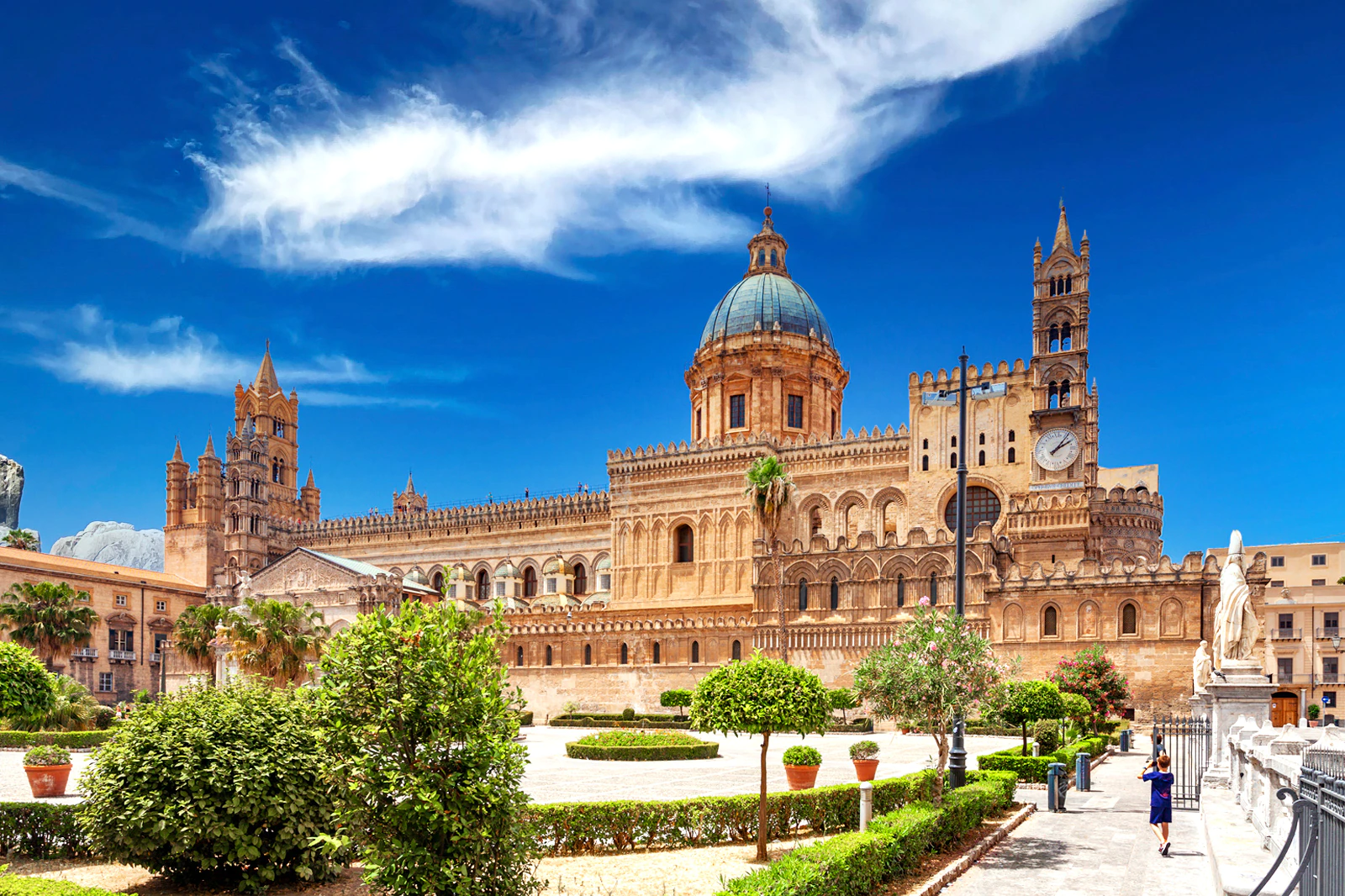
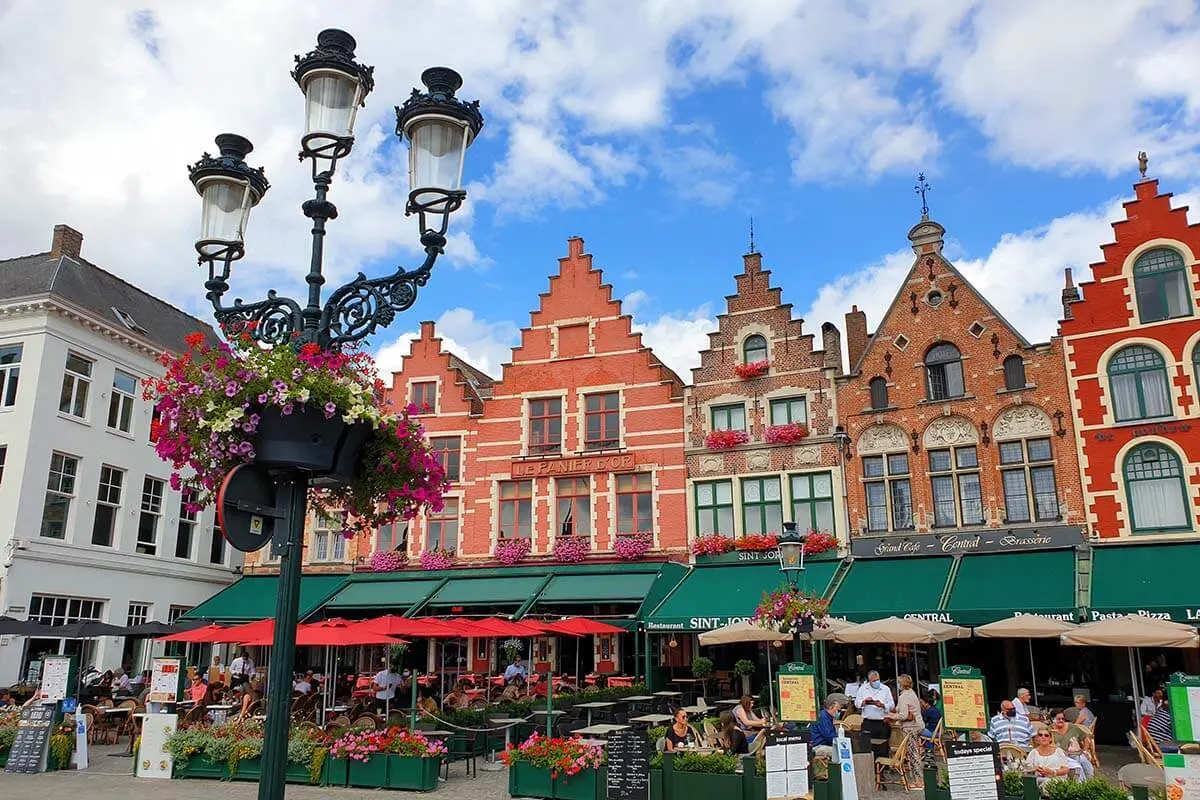
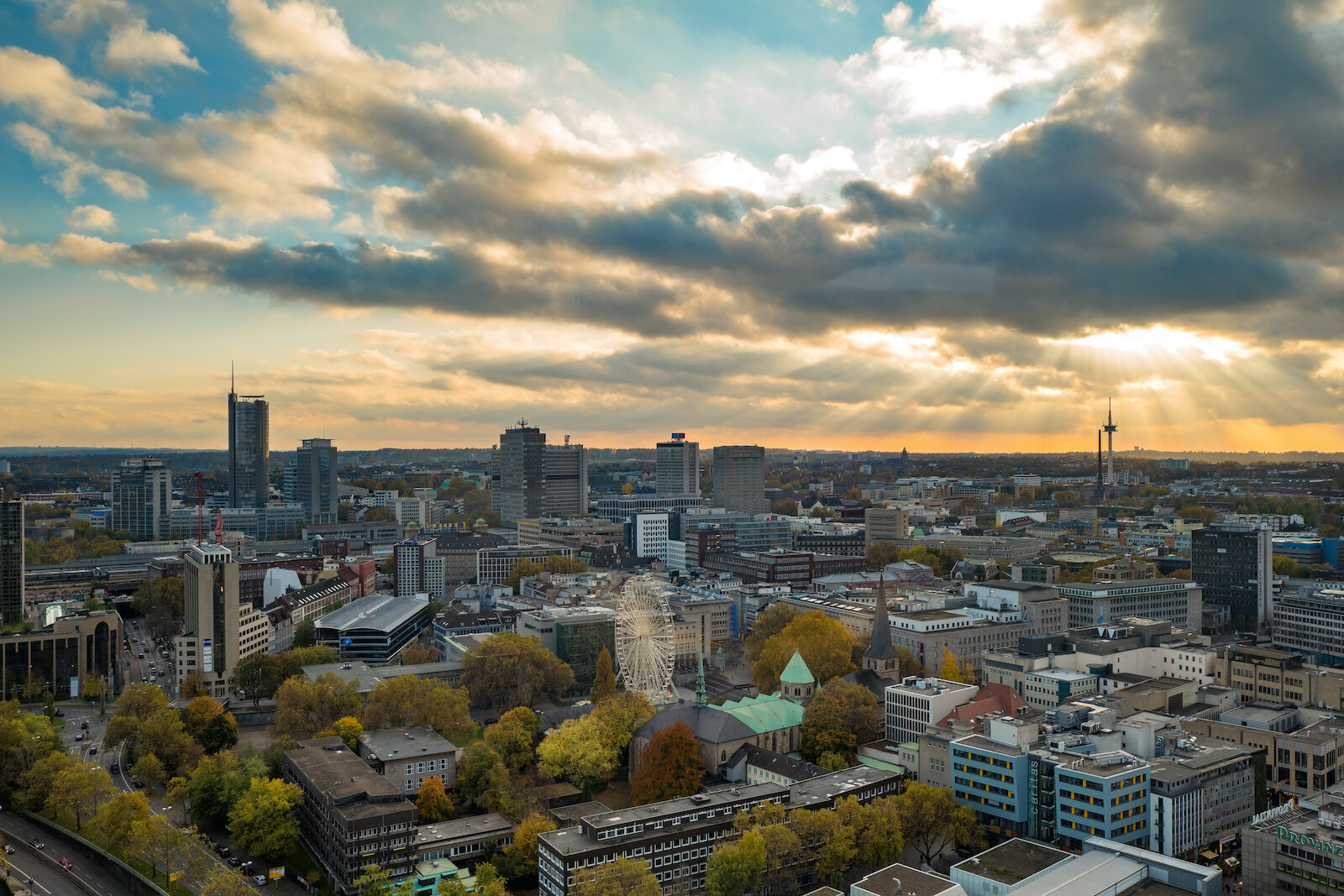

Join the Conversation